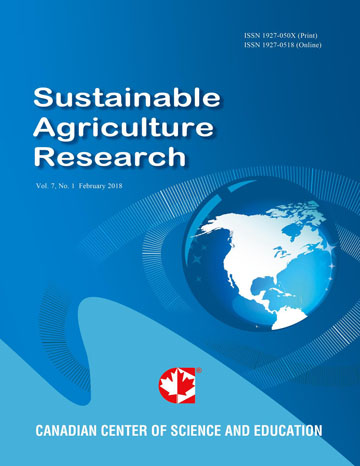Synergy and/or Antagonism in a Cover Crop Sequence: Rotational Effects on Rye in the Midwest
- D. Esther Shekinah
- James K. Stute
Abstract
Cover cropping reduces soil erosion mainly by providing cover when the soil is left barren after a short season crop. It also improves nutrient cycling and prevents the loss of NO3-N by leaching especially during late fall and early spring season. When CCs are grown in a sequence, they are able to harvest both the benefits mentioned above and provide ecological services. However, there may be synergistic or antagonistic effects in action between CCs just as is the case of CC allelopathy in weed control. Field experiments were conducted over two cropping seasons (2016-16 and 2016-17) at Michael Fields Agricultural Institute, Wisconsin on a forest derived Fox silt loam (Fine-loamy, mixed, mesic Typic Hapludalfs) under organic certification to determine the effect of sequential planting of CCs on Above Ground Biomass (AGB) yield, N and C addition and to determine the synergistic or antagonistic effect of the species grown in a sequence on each other. Ten different species of CCs were planted immediately after crop harvest in early August followed by winter rye in a sequence, after roll-crimping of the first cover. The cropping sequences significantly affected the cover crop yield and related parameters. Radish – winter rye sequence was the best performing one in both years of study with regard to the AGB yield (13.96 and 14.87 Mg ha-1 respectively), and large amounts of N and C added to the soil. Phacelia – winter rye followed close, with the sequence recording on par yields in 2015-16 (13.28 Mg ha-1). Winter rye performed better following a dicot compared to monocot; non-legume compared to a legume. The CC sequences also exhibited synergism and antagonism. The yield of winter rye was boosted when the biomass yield of the forage radish it followed increased, which we consider as synergy: while the yield of winter rye reduced whenever the yield of oat, barley or beseem clover it followed increased, which we consider as an antagonistic effect. The other CCs performed moderately and were greatly a reflection of the prevailing weather conditions. More research along this line is recommended to generate research based information on synergy and antagonism in CC sequence.
- Full Text:
 PDF
PDF
- DOI:10.5539/sar.v8n2p90
Index
Contact
- Joan LeeEditorial Assistant
- sar@ccsenet.org
